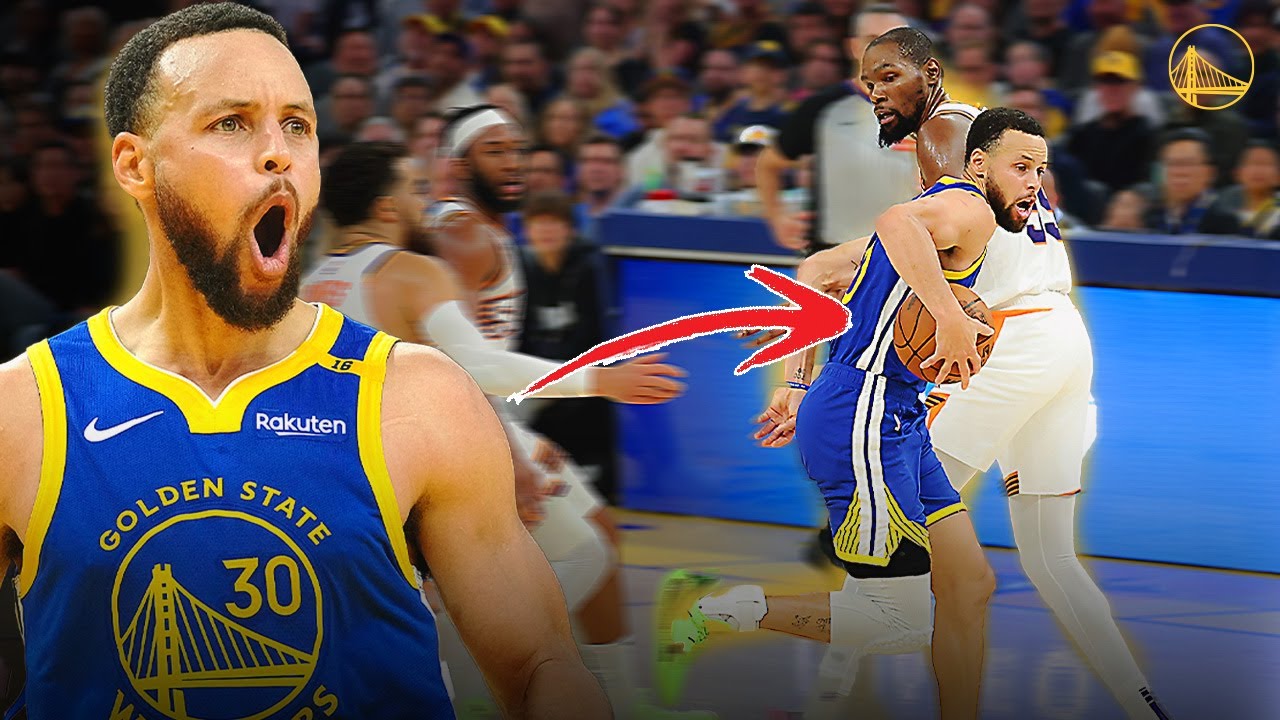Stephen Curry Puts the League on Skates: A Masterclass in Handles from the 2024-25 Season
There are moments in every NBA season that leave fans breathless, opponents frozen, and defenders flat-footed. And when Stephen Curry is on the court, those moments don’t just happen—they multiply. In the 2024–25 season, the Golden State Warriors’ perennial superstar once again reminded the world that basketball, in the right hands, becomes ballet, poetry, and magic all in one. His handles—sharp, deceptive, effortless—have become both a weapon and an art form. And this season, Curry’s wizardry with the ball reached new heights.
The term “handles” is often thrown around casually in basketball discourse, but when it comes to Stephen Curry, it means something different. It’s not just about dribbling the ball well. It’s about manipulating space, bending time, reading angles like a physicist, and creating separation when there shouldn’t be any. Curry’s mastery over the ball isn’t merely technical—it’s psychological. He doesn’t just beat defenders. He deceives them. He makes them believe they’re in the right position before snatching that comfort away with a hesitation, a behind-the-back dribble, or a lightning-quick crossover.
This season, the 36-year-old Curry didn’t slow down—he leveled up. He approached his 16th year in the league with the same youthful agility and veteran precision that has defined his career, continuing to make elite defenders look like novices and casual fans believe in magic. While his shooting has always been the headline, it’s Curry’s handles that have quietly shaped his legacy just as much. In 2024–25, that narrative moved to the foreground.
Game after game, highlight after highlight, Curry unleashed his full arsenal. Whether he was isolating on the perimeter, navigating a high pick-and-roll, or breaking down a zone with his patented stop-on-a-dime hesi, defenders could only guess—and usually guess wrong. What sets Curry apart isn’t just the quickness of his dribble or the speed of his footwork. It’s the control. Every movement is calculated but appears spontaneous. It’s jazz with a basketball—improvised, beautiful, and deadly.
Perhaps no moment better encapsulated Curry’s 2024–25 ball-handling brilliance than his performance against the Denver Nuggets in January. Matched up against elite perimeter defenders and facing a top-tier Western Conference rival, Curry turned a tense third-quarter possession into viral history. With the shot clock winding down, he faked a drive left, pulled the ball back between his legs, launched into a hesitation crossover that sent his defender stumbling, and calmly drained a step-back three from 30 feet out. The crowd erupted, social media lit up, and analysts replayed the move for days. It was a single possession that told the full story of his season—deception, control, and unrelenting confidence.
But it wasn’t just a one-off. That kind of brilliance showed up night after night.
Against the Clippers, Curry twisted Paul George with a reverse spin dribble that seemed to defy balance, freezing the entire defense before slithering into the paint for a soft floater. In a tightly contested matchup with the Celtics, he delivered a no-look behind-the-back split of a double team, then finished at the rim over Jayson Tatum with an off-hand scoop. These were not simple plays—they were master-level problem-solving in real time. And they happened with such regularity that fans became numb to the spectacular.
Curry’s handle is also what allows him to be the most dangerous off-ball guard in NBA history. Once the ball leaves his hands, the footwork begins—curling off screens, faking cuts, re-positioning, and re-appearing in a flash. But it all begins with that initial burst, that one-dribble shift that forces defenses to collapse, overhelp, and scramble. His ability to manipulate defenders one-on-one makes his entire team better, even when he’s not shooting.
Teammates and coaches have continued to marvel at Curry’s handle as much as his shooting. Warriors assistant coach Bruce Fraser put it succinctly during a midseason media session: “It’s not just flashy. It’s functional. Steph breaks the defense with the dribble just as much as he breaks it with the shot. That’s what people miss.”
And while the YouTube clips and social media edits tell one version of the story, the advanced metrics back it up. According to Synergy Sports, Curry led the league in points per possession off isolation plays where he created his own shot after three or more dribbles. His turnover rate remained remarkably low considering the volume of ball-handling responsibilities he carried, and his shooting percentages off the dribble from beyond the arc were once again among the NBA’s best.
Yet what makes his 2024–25 handles even more impressive is that he’s doing it in a league that knows exactly who he is and what he wants to do. There are no surprises with Curry anymore. Defenders prepare for him with obsessive attention to detail. Teams scheme with double traps, switches, and length. Still, he finds ways to beat them—not just with the shot, but with the dribble. The moment you reach, he’s gone. The moment you guess, you’re cooked. The moment you hesitate, he’s hitting you with a side-step into space.
Even younger stars have begun modeling parts of their game after Curry’s handle. Players like Tyrese Maxey, Anthony Edwards, and Jalen Green have openly praised his footwork, shiftiness, and ability to change pace. And while comparisons are flattering, the truth remains that no one moves quite like Stephen Curry. His center of gravity, his flexibility, his hand-eye coordination—all combine in a way that’s still singular in today’s NBA.
This season also saw Curry debut a few new wrinkles to his game—subtle but significant. There was a greater use of the in-and-out dribble to freeze rim protectors. His left-hand control, always solid, reached a new level, allowing him to drive and finish with equal confidence on both sides. And the pace of his moves became even more unpredictable. Sometimes he slowed down just enough to lure a defender into false security, then struck with a quick burst. Other times, he flowed from one move to another so quickly that even the camera operators couldn’t track him smoothly.
In post-game interviews, Curry often downplayed the flash, crediting film study, repetition, and rhythm. “I’ve been dribbling a basketball since I was two,” he said with a smile after a 40-point night in March. “It’s just part of my DNA now. But I’m still learning. Still experimenting.”
That curiosity—still alive after so many years in the league—is perhaps the key to his continued evolution. Where many players reach their peak and plateau, Curry seems to be on an endless curve of refinement. He doesn’t add things just for the sake of flash. He adds them because the game evolves, and so must he.
It’s also worth noting the joy. Curry plays with a freedom and lightness that few can replicate. The handles are part of that expression. They aren’t pre-packaged or robotic. They are jazz riffs—spontaneous, flowing, reactive. That’s why fans love them. That’s why kids on playgrounds imitate them. And that’s why defenders fear them.
As the 2024–25 regular season wound down and the Warriors pushed toward another playoff run, Curry’s impact remained constant. Whether he was scoring 40 or drawing defenders to open up shots for teammates, he did it all with the ball tethered to his fingers like it was part of his body. His handles weren’t just a highlight—they were a foundational part of everything the Warriors accomplished.
Looking ahead, it’s clear that as long as Curry laces up, there will be more moments to come—more crossovers that leave defenders on the floor, more hesitations that freeze time, more behind-the-backs that make crowds gasp. The league may have younger stars, taller guards, and faster athletes, but no one yet has replicated Curry’s combination of control, unpredictability, and precision. He remains the standard, the magician, the master.
And for fans, that means one thing: keep watching. Because with Stephen Curry, the next jaw-dropping handle is never far away. It’s only a crossover, a hesitation, and a flick of the wrist away.



